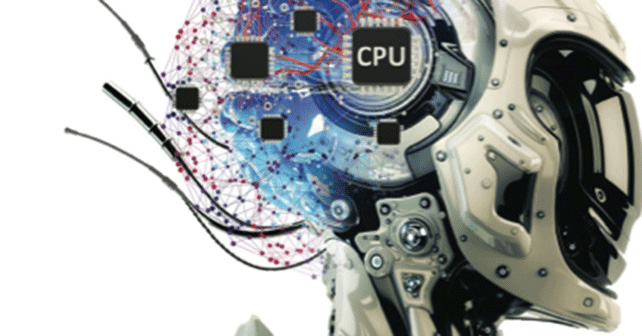Tomorrow’s challenges demand the intelligence and experience of every generation.
What it means to work is rapidly evolving. People of all ages, generations and career stages have been leaving their jobs in record numbers. We have to re-examine all of our pre-pandemic assumptions about talent to navigate this era of rapid change successfully. The challenges are daunting, and one thing is for sure: they won’t be solved by one generation alone. To find a way forward and create successful solutions, we will need to tap into the insights and perspectives of all of our people. We need ‘Gentelligence’, the collective intelligence that comes from intergenerational learning and collaboration.
Gentelligence is the ability to break down age-based tensions and instead build up intergenerational power. It shifts our view of generational differences, from a threat to an opportunity for learning. It’s about changing the often-negative conversation around generational dynamics to build awareness that every generation has something to teach – and something to learn from – those who are both older and younger.
Like other types of diversity, generational diversity can often result in more challenges than benefits if not proactively managed. For example, research shows that poorly managed age diversity within teams can decrease performance and increase turnover. Conversely, well-managed age diversity can result in the valuable exchange of unique knowledge and complementary experiences across generations, leading to increases in performance. Therefore, finding effective strategies to manage and lead our multigenerational workforce is critical to leveraging this talent potential.
We are in the midst of the most significant shift in management and leadership of our lifetime, one that requires that we reconsider even the most fundamental questions: Where will we work? Why will we work? Who will be doing the work? These are complex yet vital questions and ones that every organization is attempting to navigate.
To make the most of our multigenerational workforce moving forward, the four key practices of Gentelligence should be applied when crafting talent strategies: resist assumptions, adjust the lens, strengthen trust, and expand the pie.
Resist assumptions
As leaders work on return-to-the-office plans, many are struggling to predict what approaches will work best for different segments of their workforce. In doing so, it is vitally important that they resist clichéd assumptions about what will satisfy different generations of employees.
In 2019, a New York Times article argued that Millennials and Gen Zs wanted greater flexibility in where they worked, and that the notion that work could only happen in an office was woefully antiquated. When workers across industries went remote in the spring of 2020, most then assumed our youngest generations would fare the best. Between their desire for flexibility and reputation for digital savviness, it seemed certain that Millennials and Gen Z would thrive working from home, while older generations might suffer due to a lack of tech skills and a longing for their traditional office environment.
This was a great lesson in the danger of assumptions, especially when understanding generations in the workplace. Multiple datasets have shown that it has been the youngest workers who have reported the lowest levels of job satisfaction during the pandemic, with Gen Z struggling the most, followed by Millennials, Gen X and baby boomers.
Rather than relying on clichés, we need to go deeper. Gen Z employees (the oldest of whom were 23 when the pandemic hit) had just started their careers – or were preparing to do so – when the world went into lockdown. Younger Millennials were also in their early career stages.
During these career phases, the office provides a function that those later in their careers need much less: opportunities for networking, relationship-building, and learning the ropes. It’s a time to prove themselves, come early or stay late, pop their heads into their boss’s office to ask a question, or head off to lunch with a co-worker.
When offices shut down completely, all of these opportunities disappeared, leaving endless Zoom meetings in their wake. While companies tried to compensate with online ‘happy hours’, it was no substitute for the informal connections and learning that occur daily in the office.
Older workers, in contrast, tend to have already established their professional networks and built strong relationships with colleagues, and are more comfortable working independently. Concerns that older workers would struggle with the necessary technology were also largely unfounded: there’s little data to support the notion that older people struggle with tech, despite the stereotypes.
Older Millennials and Gen Xers had struggles as well, but those tended to be around balancing work and family commitments, including supervising remote schooling and caring for isolated parents and grandparents. In fact, many were relieved they were able to be at home to handle these responsibilities rather than being expected to go into the office.
There are lessons here as we decide how to move forward with return-to-the-office plans. Young people want flexibility, but that shouldn’t be confused with not ever wanting to go into the office. Older generations have managed better than expected with remote work – and it shouldn’t be presumed they are all anxiously waiting to return to pre-pandemic schedules and structures.
Rather than assuming different generations of employees will resist or embrace different models of work, leaders need to go beyond stereotypes and engage their people in conversations about what they need and value.
Adjust the lens
There’s a new ‘war for talent’ and it seems no one knows how to win. Organizations need to adjust their lens about where they will find employees to tap into new and unexpected talent sources.
For decades, most organizations have relied on a select number of go-to sources for filling their pipeline, such as the university careers fair. Changes are afoot. Organizations need to take a broader view of who their newest employees will be, especially as the number of people under 24 is rapidly decreasing around the world. In the US, the number of high-school graduates is expected to peak in 2025 before plummeting. With our traditional recruiting pools set to shrink, we need to start thinking more creatively about who our new talent could be – while also focusing on how to retain the strong talent across generations that we already have.
When it comes to finding new employees, organizations seek people who are adaptable and eager to learn. Unfortunately, more often than not, our implicit stereotypes lead us to believe these characteristics are more likely to be found in younger workers rather than older ones. These assumptions are usually unfounded: according to a recent AARP Work and Career Study, for instance, over 80% of 45-64 year olds consider the opportunity to learn something new as critical to their view of an ideal job.
Just as the rise of remote working has allowed us to hire new talent regardless of geographical location, embracing a Gentelligent mindset will enable us to consider that our newest employees could be Gen Xers or baby boomers seeking their ‘second act’ career – or their third – or older Millennials ready to return to the workplace after being at home with young children.
To facilitate these different recruiting methods, organizations need to signal their openness to finding talent in any age group. To do so, companies across industries should actively develop ‘restart’ and ‘returnship’ programmes and adjust their lens for who their new talent could be.
Strengthen trust
Even under the best of circumstances, it is challenging to establish trust between employees who perceive themselves as different in some important way, as is the case with generations and age. It is even harder during times of change, when our levels of security and trust tend to falter. After a tumultuous period of job losses, resignations and organizational reshuffling, even the most dedicated employees feel uncertain about what is to come. We’ve seen this increase levels of generational tension as older and younger workers compete for new opportunities amid a scarcity of resources and feelings of insecurity in their current jobs. Remote work has compounded the challenge of establishing trust between employees in different generations: some of our youngest employees have never stepped foot inside their companies or met their colleagues in person.
According to researcher Amy Edmondson, psychological safety is the most critical element in a successful team. It allows every team member to feel willing to ask for help, share their best ideas, and take risks. It is particularly important when team members bring different amounts of experience and expertise to the table. To build up intergenerational psychological safety, teams and organizations should start with a baseline measure of psychological safety levels. Google’s re:Work site provides a customizable survey that can be used to get started. Items include “People on this team sometimes reject others for being different” and “Working with members of this team, my unique skills and talents are valued and utilized”.
When a baseline is established, it can serve as a great jumping-off point for discussions for solutions within a team. If people – older or younger – don’t feel comfortable asking for help, how can the team normalize this behaviour? If team members aren’t confident their ideas will be heard or received by those with different generational experiences and expertise, what process could be implemented to change that?
Expand the pie
We need all hands on deck. Organizations need both fresh perspectives and seasoned experience, and a way to integrate the two successfully. Leaders need to promote a mindset that the diverse experiences and expertise offered by different generations are necessary for the innovation and adaptability that the future will require. In other words, we need to move from a win-lose mindset to one that demonstrates the benefits of collaborating for mutual gain. It is a concept known in negotiations as expanding the pie. For example, consider what may be gained by filling your workforce with people with a wide range of different kinds of experiences and different educational paths.
Many organizations are questioning whether the traditional four-year degree, long the ticket for entry to a white-collar career, is still mission-critical for every employee. Employees are asking similar questions: many young workers are already taking a different path, with more Gen Zs forgoing traditional college degrees in favour of alternative types of training and education.
This trend is fuelled by concerns about student loan debt suffered by Millennials and Gen Xers, and the broader availability of technical training programmes that come with a guarantee of stable employment. For older Gen Zs – those who grew up in the era of the Great Recession and are starting their careers in the wake of the pandemic – these kinds of paths hold a great deal of appeal. By being open to a wide range of education and training options, we can expand the pie by welcoming the complementary kinds of skills, knowledge and abilities that different generations tend to have in spades.
It’s time to seek out new answers to our age-old management and leadership questions and craft Gentelligent strategies to engage employees across every generation. The future of work must embrace the needs and the value of all of our employees. We need to build back with workplaces where generational differences are seen as an advantage, and an opportunity.




